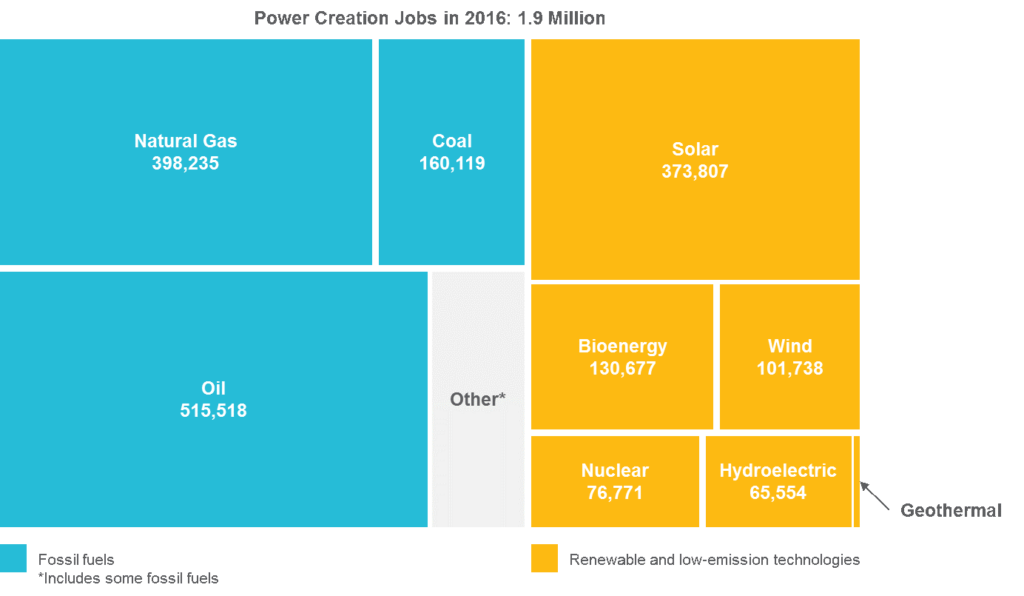
In 2016, according to a U.S. Department of Energy and Employment report, 56% of energy industry jobs involved in power creation stemmed from oil, natural gas, and coal. Solar had the most jobs in the renewables space and was second only to oil in total jobs. Future energy sector job growth will be driven primarily by renewables.
Key Details
For this U.S. Department of Energy and Employment report’s analysis, energy industry jobs involved in power creation are defined as those employed in electric power generation, mining, and other fuel extraction activities. As shown in the diagram below, in 2016, 1.9 million Americans fit this profile. The oil sector was #1 with slightly more than a half million workers, with natural gas as #2 at nearly 400,000. Solar was #3 followed by coal. For context, approximately 144 million Americans (with some variation each month) were employed in total in 2016 per U.S. Department of Labor.

While low in total compared to overall U.S. employment, energy jobs are highly influential at the state level since they are not spread equally across the United States, thereby receiving increased attention from elected representatives of those states:
Power creation is not the only source of energy employment. The Energy Department report stated 2.3 million additional jobs were in energy transmission, storage, and distribution; a number that includes powerline and pipeline workers and more than 900,000 retail jobs, such as gas station workers and fuel dealers. If non-traditional energy workers are included in the mix—those in manufacturing and installing energy-efficient products—the total energy-related job count reaches 6.4 million.
Implications
Declining oil and natural gas prices, coal plant and mine closings, and the growing availability of renewable-sourced energy collectively continues to have the greatest effect on U.S. energy employment. Ongoing political divisions will exacerbate the attention paid to the U.S. energy industry employment, potentially accentuated by leaders from a few states where the energy jobs are concentrated and more influential, such as in California due to renewables and West Virginia due to coal.
More Information
Fast Company: Solar Now Provides Twice as Many Jobs as the Coal Industry
The New York Times: Today’s Energy Jobs Are in Solar, Not Coal
Forbes: Memo to The NY Times – If Solar Creates Many Jobs Then Solar Is Expensive
This report is part of the Fossil Minute series. To view all featured Fossil Minutes, please click here.
View MoreSussex Economic Advisors is now part of ScottMadden. We invite you to learn more about our expanded firm. Please use the Contact Us form to request additional information.